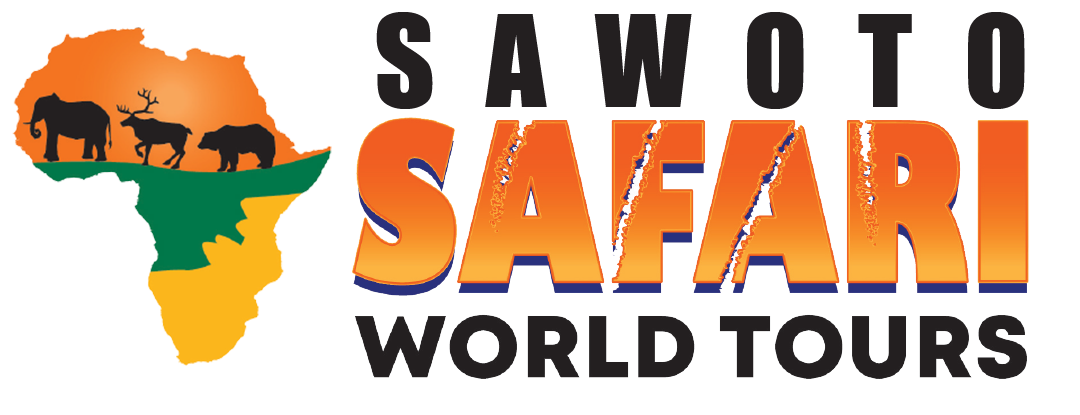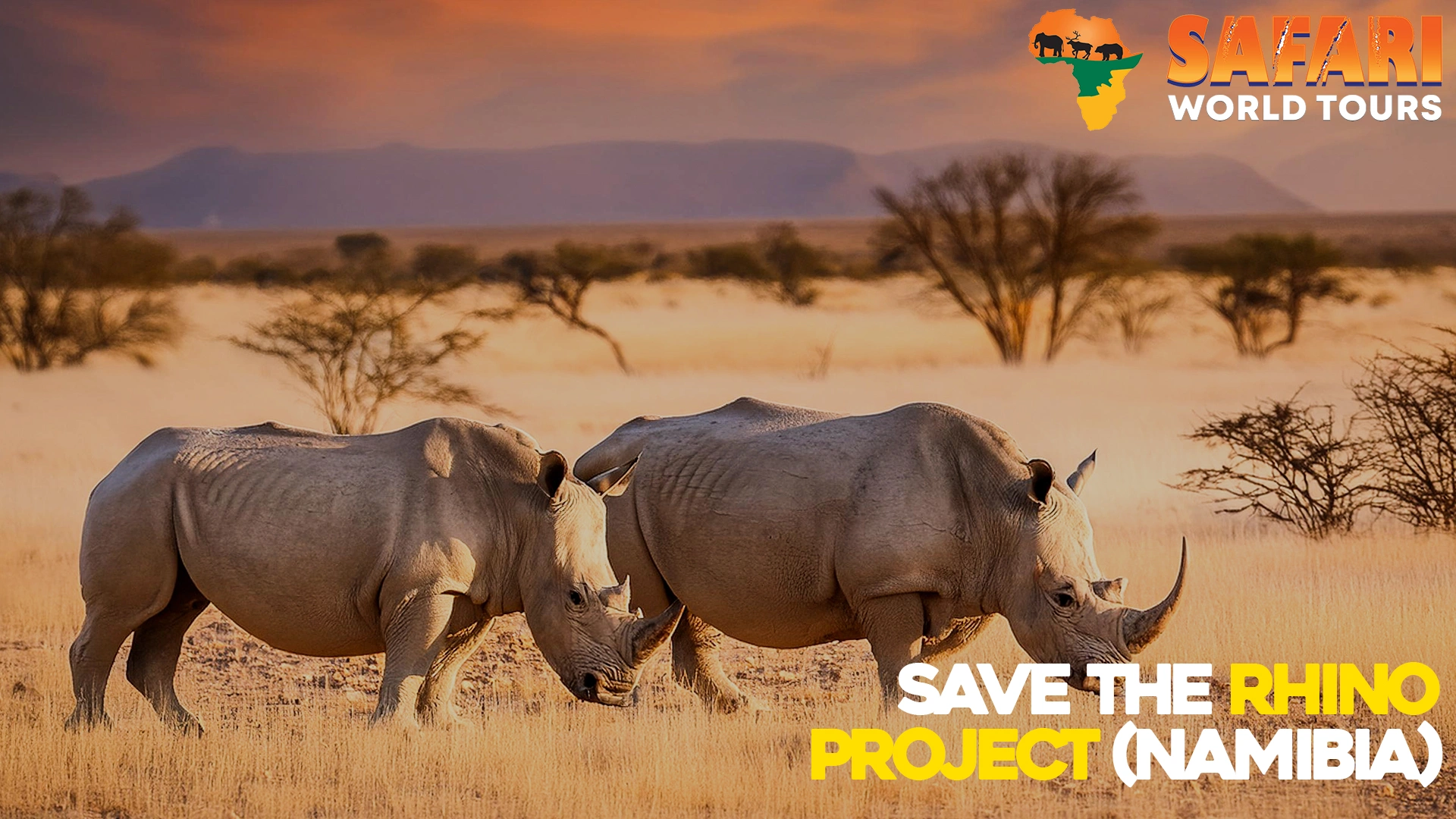Das Nashorn ist ein einzigartiges Wildtier und Sie können sich gar nicht vorstellen, wie schön es ist, ihm ganz nahe zu sein und vielleicht ein Foto mit ihm zu machen. Interessanterweise gibt es etwa fünf verschiedene Arten, zwei in Afrika und drei in Asien. Namibia ist die Heimat mehrerer Wildtiere, insbesondere des Nashorns, und beherbergt 34 % der weltweiten Population der Spitzmaulnashörner. Rettet das Nashorn.

Allerdings sind Nashörner in ganz Afrika Opfer der Wilderei geworden, vor allem wegen ihrer Hörner, wodurch die Nashornpopulation Die Zahl der Wilderer, die nicht nur in Namibia, sondern weltweit existieren, ist auf fast weniger als 5000 gesunken. Aufzeichnungen über die Wildereikrise wurden in benachbarten Südafrika, aus denen hervorgeht, dass seit 2009 über 950 Nashörner getötet wurden.
Laut der Roten Liste bedrohter Arten der IUCN gilt das Spitzmaulnashorn als vom Aussterben bedroht. Die Überlebenschancen dieses einzigartigen Wildtiers sinken immer weiter. Mehrere Kampagnen wurden erfolglos durchgeführt, weil Wilderer
DER SAVE THE RHINO TRUST

Doch im entlegenen Nordwesten der Kunene-Region in Namibia gibt es einen Hoffnungsschimmer: Der Save the Rhino Trust (SRT) wurde gegründet und ist seit über 25 Jahren für die Überwachung und den Schutz der Nashörner verantwortlich.
Das SRT hat eine Vereinbarung mit dem Umweltministerium unterzeichnet, die die Erlaubnis zur Überwachung und zum Schutz des Spitzmaulnashorns sowie zur Durchführung verschiedener Forschungen erteilt.
Mit einem engagierten Team von Fährtenlesern und Patrouillen decken sie ein riesiges Gebiet ab, um sicherzustellen, dass diese spektakuläre Tierwelt, die allmählich selten wird, geschützt und ihre Populationen gestärkt werden. Dies geschieht zu Fuß, mit Fahrzeugen und aus der Luft, um auch schwer erreichbare und unzugängliche Orte leicht erreichen zu können.
Das Team legt zum Schutz der Nashörner eine Strecke von 40 bis 50 km zurück und konnte die Wildereiaktivitäten deutlich eindämmen. Das SRT hat im Palmwag-Gebiet 13 Lager eingerichtet, die mit dem Flugzeug erreichbar sind, und verfügt über Fährtenleser und Polizisten, die in der Gegend in Bereitschaft sind.
Die Wilderei von Spitzmaulnashörnern ist seit langem im Nordwesten Namibias verbreitet und reicht bis in die 1980er Jahre zurück. Heute ist die Nashornpopulation in Namibia auf schätzungsweise 60 Tiere gesunken.
Die größte Herausforderung stellt das Spitzmaulnashorn dar, das derzeit bedroht und vom Aussterben bedroht ist. Angespornt durch die Leidenschaft, die verbliebenen Nashörner zu überwachen und zu schützen, wurde der Save the Rhino Trust gegründet und 1982 offiziell registriert.
Die Organisation arbeitet seitdem mit dem Ministerium für Umwelt und Tourismus, der örtlichen Bevölkerung und Partnern auf der ganzen Welt zusammen, um die Sicherheit der Nashörner zu verbessern. Dieser Schritt hat zu einem enormen Anstieg der Nashornpopulation um 200 Prozent geführt.
Dies hat nicht nur dazu beigetragen, diese Tiere zu schützen, sondern ist auch für die Gemeinschaft von Vorteil, da es weiterhin Millionen von Touristen anziehen die von der Einzigartigkeit dieser seltenen Tierwelt angezogen werden. Das SRT verfügt über Fachleute, die sich bestens mit Nashörnern und ihrer Umgebung auskennen. Sie haben auch Maßnahmen ergriffen, um die ländliche Bevölkerung in den Regionen Kunene und Erongo aufzuklären.
ROLLE DES ENGAGEMENTS DER GEMEINSCHAFT IM PROJEKT SAVE THE RHINO
Die Einbindung der Bevölkerung spielt eine entscheidende Rolle für den Erfolg des Save the Rhino-Projekts in Namibia. Das Projekt erkennt an, dass die Bevölkerung vor Ort ein begründetes Interesse am Schutz der Tierwelt, einschließlich der Nashörner, hat und dass ihre Beteiligung für den langfristigen Erfolg der Schutzbemühungen von entscheidender Bedeutung ist.
Eine der wichtigsten Strategien des Save the Rhino-Projekts besteht darin, die örtlichen Gemeinden durch Bildungs- und Sensibilisierungsprogramme in die Naturschutzbemühungen einzubeziehen. Indem die Menschen über die Bedeutung der Nashörner und die Bedrohungen, denen sie ausgesetzt sind, aufgeklärt werden, versucht das Projekt, in den örtlichen Gemeinden Unterstützung und Verständnis für den Nashornschutz aufzubauen.

Darüber hinaus arbeitet das Projekt daran, die örtlichen Gemeinden in die Bekämpfung der Wilderei einzubeziehen, da sie oft die erste Verteidigungslinie gegen Wilderer sind. Dazu können die Ausbildung lokaler Ranger, die Bereitstellung von Ausrüstung und Ressourcen sowie die Schaffung von Anreizen für Gemeindemitglieder gehören, Wildereiaktivitäten zu melden.
Das Projekt erkennt auch die Bedeutung der Bekämpfung der zugrunde liegenden sozioökonomischen Faktoren an, die Wilderei begünstigen, wie Armut und Arbeitslosigkeit. Durch die Förderung nachhaltiger Lebensgrundlagen und wirtschaftlicher Entwicklung in lokalen Gemeinden versucht das Projekt, die Anreize für Wilderei zu verringern und eine langfristige Unterstützung von Naturschutzbemühungen zu fördern.
Insgesamt ist die Einbindung der Gemeinschaft für den Erfolg des Projekts „Save the Rhino“ in Namibia von entscheidender Bedeutung. Das Projekt arbeitet daran, starke Partnerschaften und Kooperationen mit den örtlichen Gemeinschaften aufzubauen, um seine Naturschutzziele zu erreichen.
FAQs
F: Was ist das Save the Rhino-Projekt in Namibia?
A: Das Projekt „Save the Rhino“ ist eine Naturschutzinitiative mit dem Ziel, die Nashornpopulation in Namibia zu schützen und zu erhalten.
F: Was sind die Ziele des Save the Rhino-Projekts?
A: Zu den Zielen des Projekts „Save the Rhino“ gehören die Eindämmung der Nashornwilderei in Namibia, die Sensibilisierung der Öffentlichkeit für die Bedeutung des Nashornschutzes und die Förderung nachhaltiger Tourismuspraktiken.
F: Welche Strategien verwendet das Save the Rhino-Projekt, um seine Ziele zu erreichen?
A: Das Projekt „Save the Rhino“ verwendet eine Reihe von Strategien, darunter Maßnahmen zur Wildereibekämpfung, Einbindung und Aufklärung der Gemeinschaft, Partnerschaften mit anderen Naturschutzorganisationen und nachhaltige Tourismuspraktiken.
F: Wie erfolgreich war das Projekt „Save the Rhino“ in Namibia?
A: Das Projekt „Save the Rhino“ hat die Nashornwilderei in Namibia erfolgreich eingedämmt. Seit Beginn des Projekts ist die Zahl der Wildereifälle um 98 % zurückgegangen. Das Projekt hat auch dazu beigetragen, das öffentliche Bewusstsein für die Bedeutung des Nashornschutzes zu stärken und nachhaltige Tourismuspraktiken zu fördern.
F: Wie kann ich das Projekt in Namibia unterstützen?
A: Sie können das Save the Rhino Project unterstützen, indem Sie an seriöse Naturschutzorganisationen spenden, das Bewusstsein für die Bedeutung des Nashornschutzes schärfen und Hütten und Touren Betreiber, die verantwortungsvollen und nachhaltigen Tourismus fördern.
F: Wie bezieht das Projekt „Save the Rhino“ die örtlichen Gemeinden in die Artenschutzbemühungen ein?
A: Durch Bildungs- und Sensibilisierungsprogramme, Initiativen zur Bekämpfung der Wilderei sowie die Unterstützung nachhaltiger Lebensgrundlagen und wirtschaftlicher Entwicklung werden die örtlichen Gemeinden in die Naturschutzbemühungen einbezogen.
F: Welche Rolle spielen nachhaltige Tourismuspraktiken beim Nashornschutz?
A: Nachhaltige Tourismuspraktiken können eine wichtige Rolle beim Naturschutz spielen, indem sie wirtschaftliche Anreize für Naturschutzbemühungen bieten, lokale Gemeinschaften unterstützen und verantwortungsvolle Tourismuspraktiken fördern, die negative Auswirkungen auf die Umwelt und die Tierwelt minimieren.


